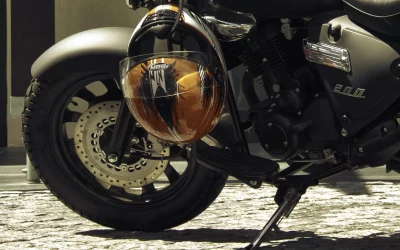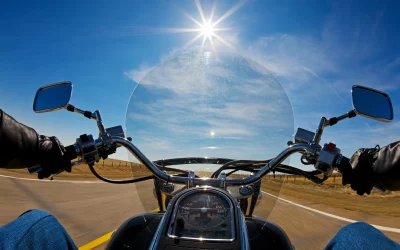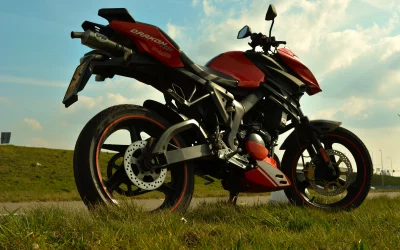How to Make a Personal Injury Claim After a Motorcycle Accident
In Colorado and other states, patriotic and diligent members of each town are dedicated to motorcycle riding as a full-time endeavor or weekend hobby. Motorcyclists come in different shapes and sizes. Bikers come in all shapes and sizes.
They are young, elderly, and in between. Motorcycle ownership and riding are not determined by class, aptitude, or education. It is one of the few pursuits that are not constrained by these constraints. Bikers often share a passion for the nation, liberty, and, yes, justice.
As citizens and tourists to the state of Colorado, injured motorcyclists must seek and achieve justice when they are harmed as a consequence of another’s carelessness or fault. Contrary to popular assumption, motorcyclists do not risk harm due to other drivers’ negligence, recklessness, or fault on the roads, streets, or highways.
It is not a defense in a motorcycle lawsuit to assert that the biker would not have sustained such serious injuries if they had been driving a car or a truck. Those who oppose motorcycle riders’ rights to use the road may just as readily say that the motorcycle rider would not have been wounded had he or she remained at home or enjoyed a leisurely cruise trip. As strange and absurd as these arguments may seem, they are made regularly by many individuals, particularly those engaged in the insurance sector.
Let us be clear. Depending on the circumstances, motorcycle riders and motorcyclists who sustain injuries due to another driver’s negligence, or even the negligence of another biker, have a compensation claim. It should be reminded that a biker is responsible for adhering to traffic laws and operating their motorcycle reasonably and safely.
Allow me to clarify something else. The insurance sector does not see a motorcyclist’s entitlement to reimbursement as absolute. In other words, insurance companies will seldom roll out the red carpet. They will rarely automatically reimburse an injured motorcycle rider with a fair, reasonable, or equitable damage claim settlement.
Medical bills and documents must be produced and the severity and permanent nature of the injuries for a motorcycle rider to secure a settlement before trial or a judgment at trial that is commensurate with the personal injuries sustained.
When a motorcyclist is injured in an accident, the accompanying injuries may severely affect the biker’s ability to work and fulfill personal commitments. The biker is often confronted and burdened by missed pay, diminished earning capacity, employment uncertainty and loss, pain and suffering, medical expenditures, and various other issues.
Again, motorcyclists are passionate about riding, and their enthusiasm extends to job, family, nation, and giving back to the community. Following a collision, the motorcycle rider’s whole life is flipped upside down.
As co-founder of Harley Davidson Motorcycles, William Harley put it, “Life gives few promises, but the harder and longer you work, the more likely you are to succeed.” It’s worth noting that the biker community and its members take this to heart every day and demonstrate their support for this way of life through both words and deeds.
Free Consultation
In Person | Phone | Zoom
Statistics on Motorcycle Accidents
According to the NHTSA (National Highway Transportation Safety Administration), motorcyclists are statistically more likely to die in a collision than motorists. According to the NHTSA, motorcycle accidents claimed twenty-seven (27) times as many lives than accidents involving a driver or passenger in another form of car. This number was arrived at in part via the use of a per-mile-traveled statistic. Regardless of the numbers, it is evident that operating and riding a motorcycle may be highly hazardous; nonetheless, it should be remembered that owning and riding a motorcycle is a decision made by Americans in the spirit of independence and freedom, which many motorcyclists value, respect, and cherish.
An analysis of ten years of NHTSA records indicates that between 4,000 and 6,000 people die each year in motorcycle accidents. Many of these fatalities may have been averted with slower speeds, less distracted driving, and less impaired driving, as well as other variables affecting motor and cognitive abilities when operating a motor car or motorcycle.
Colorado, California, and Texas are the states with the highest number of motorcycle rider deaths. Motorcycles are popular and numerous in each of these states, owing to the states’ year-round riding conditions. Additionally, each state is fairly huge physically, with dense population centers and congested highways. These and other variables contribute to the fact that motorcycle riders die at a greater rate in California than in other states.
Unfortunately, the statistics on alcohol usage and motorcycle accidents are rather worrying. Around 30% of motorcycle deaths are believed to have included an intoxicated rider with a BAC (Blood Alcohol Content) of or above. In terms of human injuries, the national estimate is that between 80,000 and 100,000 motorcycle riders and passengers are wounded each year. According to data, motorcycle drivers account for the bulk of individuals wounded compared to motorcycle passengers. This is because the majority of motorcycle accidents involve a solo rider.
Additionally, the data on the sort of accident is intriguing. While most motor car (car) accidents involve a rear-end collision, more than 70% of motorcycle accidents involving a car or truck involve a front-end collision, with just around 5% having a rear-end collision.
Other motorists on the road should be cautious of motorcycles due to the hazards and dangers to motorcyclists and their riders. A motorcycle is no match for passenger cars in terms of size, volume, weight, or force in a collision. Certainly, in rare accidents, a large truck or commercial car may crush a motorcycle. A passenger car may also do this function.
Improved driving safety may help reduce some of these alarming figures.
When a person is hurt or killed in a motorcycle accident, statistics become rather unimportant from a legal and claim perspective, the only relevant facts pertaining to the specific case or occurrence at hand. If a biker or passenger is hurt due to another’s negligence or carelessness, a claim or lawsuit should be filed to protect and defend the victim’s and family’s legal rights.
MOTORCYCLE ACCIDENTS: THE MOST COMMON CAUSES
While there are many typical causes of motorcycle accidents in Colorado and around the country, each case or claim should be reviewed on its facts, merits, and circumstances. The following are some of the most prevalent causes of motorcycle accidents:
Motorcycle Collision Head-On
A significant proportion of fatal motorcycle accidents occur as a result of head-on collisions. When a motor car collides head-on with a motorcycle, the subsequent impact and injuries may be fairly severe and often are. Numerous head-on collisions may be prevented by driving more cautiously, at slower speeds, and fewer distractions.
Improper Left Turn into a Motorcyclist’s Path (Right of Way)
In Colorado and other states, a driver making a left-hand turn must yield to oncoming traffic. This is particularly critical when a motorist makes a left turn, and a cyclist approaches from the other direction. When two motorists are in a similar scenario, and there is a “near call” but no collision between the cars, it is possible that no one is injured when one car swerves to avoid the other. This may be very different for a motorcycle rider who may miss direct contact with the left-hand turning car but sustains major bodily injuries due to losing control of the motorcycle, putting it down to avoid the accident, and/or being ejected from the motorcycle. In such a circumstance, the motorcyclist may very possibly be entitled to compensation from the criminal who made the left turn.
Driver Ignores a Red Light or Stop Sign (Intersection Collision)
Another frequent cause or kind of motorcycle accident is a driver who fails to stop at a red light or stop sign. Motorcycle riders and other motorists have a right to anticipate that other road users will obey traffic control devices and traffic laws. As with other types of motorcycle accidents, each time there is a collision or near-collision between a motorcycle and a motor car, the personal injuries sustained by the rider and passenger on the motorcycle may be extremely catastrophic and life-changing.
A Motorist Makes Attempts Lane Change That Is Both Dangerous and Improper
Numerous motorcycle accidents occur due to the driver of a motor car being distracted by the road and traffic conditions. Additionally, there are a variety of driver distractions that impair the driving abilities of even the most skilled drivers and surely exacerbate those of inexperienced drivers. When a car performs a lane change, the driver should scan his surroundings, both front and behind him, to ensure the lane change is safe and appropriate.
Unfortunately, many motorists are unaware of motorcycles on the road and try lane changes, resulting in an accident or near-crash. This leads to bodily harm to the motorcycle rider who is otherwise riding safely.
Splitting Motorcycle / Biker Lanes
It should be highlighted that, although most motorcyclists are decent, law-abiding, patriotic, and loyal citizens, some motorcycle accidents are the result of the biker’s fault, in whole or in part. Lane splitting may result in a collision between a car and a motorcycle.
Lane splitting is prohibited in Colorado as of the publication of this version of the book. When a bicycle cycle between and ahead of two lanes of slow or halted traffic, this is referred to as lane splitting.
Motorcycle accidents do occur due to the limited space available to operate the motorcycle between lanes and that motorists may be unaware that a motorcycle is coming when automotive traffic is halted. Of course, these collisions may be prevented with greater patience on the rider’s side and with the use of crash avoidance measures.
Speeding
As with other forms of automotive and truck accidents, many motorcycle accidents are caused by a driver, a rider, or both. Speed limitations posted on the road should be adhered to.
Additionally, motorists and bikers alike must modify and lower their speeds for heavy traffic, construction, inclement weather, and any time children and other pedestrians/bicycles cross the roadway or are near the street.
COMPARATIVE FAULT
It’s worth noting that Colorado is a relatively faulted state. In other words, blame or fault might be assigned to many individuals. Consider the following scenario: a driver tries a left turn in front of an approaching motorcycle.
A collision occurs, inflicting personal harm on the motorcycle rider. If it is finally shown that the motorcycle was traveling at an excessive rate of speed at the time of the accident, part of the blame for the crash may be assigned to the motorcyclist.
Motorcycle Riding Dangers
Certainly, motorcycle ownership and riding provide a tremendous deal of excitement, enjoyment, and usefulness. For many, the motorcycle is the primary mode of transportation due to cost savings, minimal gas use, and ease. While there are several advantages to motorcycle ownership and operation, everyday riding concerns are also to consider.
While many motorcycle riders are highly talented and extremely cautious on each journey, far too many other drivers do not adhere to the stated speed limit and break traffic laws much too often. The following are seven frequent motorcycle riding dangers that a rider may encounter on any given journey.
Left Turning Drivers
The majority of motorcycle accidents that are recorded involve a front-end contact. Many of these collisions occur due to a motorist making an incorrect or hazardous left hand turn into the motorcycle rider’s right of way.
Sudden Stops by Other Motorists
Many motorists experience anxiety while driving in traffic or near motorcycles. For whatever cause, fear sets in, and the action comes to an abrupt and abrupt halt. When a motorcycle rider is forced to come to an abrupt stop, this may be highly hazardous since around 70% of a motorcycle’s braking power is centered on the front brake. As such, under some circumstances, an abrupt, rapid halt might result in the biker being ejected over the front of the motorcycle.
Gravel and Other Road Debris
In contrast to most passenger and commercial motor cars, tiny things on the road, such as roadkill or debris, may be highly harmful to a motorcycle rider. Gravel on a highway may cause the motorcycle’s tires to lose traction, causing the machine to behave erratically and sometimes uncontrollably.
Lane Changes by Drivers
A simple lane shift into a motorcyclist’s right of way or route might have disastrous results. Even if there is no collision between the motor car and the motorcycle, an accident or crash might nevertheless result in significant injury to the rider. When a motorist attempts a lane change, caution should be used to ensure that the lane change can be completed safely. This is particularly critical when a motorcycle is the driver of a motor car’s target line of travel.
Unfavorable Weather Conditions – Wet Roads, Icy Roads, Wind, and Rain
When the weather is severe or inclement, a motorcycle rider is placed in danger. Both the rider and the motorcycle are exposed to the weather, which complicates motorcycle control and operation.
Drivers who tailgate one other excessively
On any given day, it seems as if there are always those drivers who are pressed for time and filled with impatient thoughts and acts. Additionally, far too many distracted drivers on the road nowadays are either chatting on the phone or texting.
As a result of these and other circumstances, cars will often follow too closely, resulting in rear-end collisions. Even a low-speed rear-end collision may result in catastrophic and disabling injuries to a motorcycle rider.
Crossroads
The crossroads is another often risky spot for motorcycles. Other motorists often veer into the motorcycle rider’s right of way. Additionally, many motorists fail to see or acknowledge a motorcycle as it passes through a junction. While the majority of individuals respect stop signs and traffic lights, many do not. These and other acts put motorcycle riders in danger of an accident and bodily injury.







